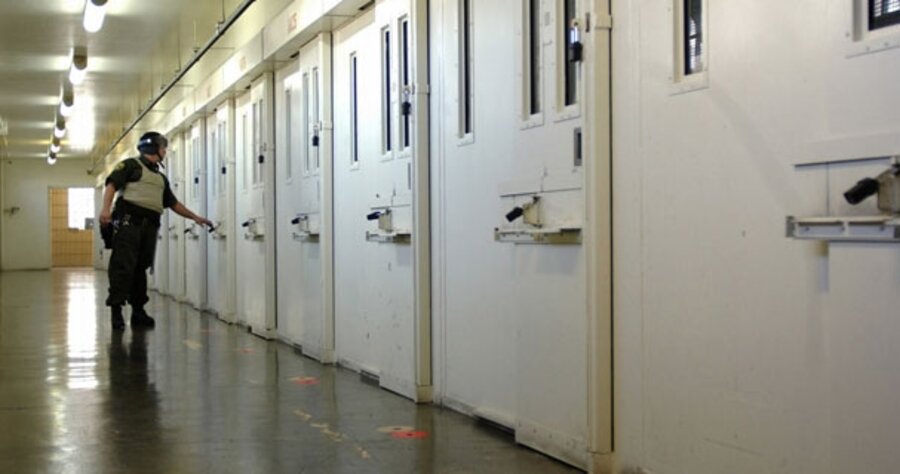As California looks to expand death row, a flap over where to build it
Loading...
San Quentin, Calif. - If Methodist pastor Liza Klein had her way, no one would be executed in the US again. But for the moment, she has another goal: keeping California's death row in her own backyard.
Despite the estimated $400 million price tag for its expansion, Ms. Klein and other death-penalty opponents want the death row to stay at San Quentin State Prison because its location next to San Francisco provides easier access to lawyers, family members, and activists.
"Even if we have the death penalty, we can stand up for some form of humane treatment for these people," says Klein, who lives in Marin County, one of the most liberal counties in the country.
Local politicians see things differently. They're pushing Gov. Arnold Schwarzenegger (R) to move at least some of the death-row prisoners away from the county, perhaps to desert prisons that are hours from the state's largest cities.
The debate is pitting liberals against liberals and shining a light on California's hundreds of death-row inmates, who are more likely to die of natural causes than face the gas chamber or lethal injection.
San Quentin Prison, built in 1852, sits on the water just north of San Francisco, about 20 minutes by car from the Golden Gate Bridge. Currently, 635 men await execution behind the Gothic turrets of the prison's castle-like buildings.
Other states execute dozens of prisoners each year, but California has executed only 13 people since the US Supreme Court allowed executions to resume in 1976. No one has been executed since a spate of legal wrangling over the lethal-injection method in 2006.
In late June, a scathing report commissioned by the state legislature said the "dysfunctional" death-penalty system is "close to collapse." Prisoners, the report said, aren't executed for an average of more than 20 years, the longest wait of any state.
In 2003, the legislature agreed to fix death-row overcrowding by building a new death row for $220 million. But a state audit estimated in June that it would actually cost $400 million – about $520,000 per cell for 768 cells holding up to two prisoners each.
In years past, local politicians pushed the state to close San Quentin and make way for a shopping center. Now they're fighting the expansion and supporting the construction of a ferry terminal instead.
Marin County Supervisor Steve Kinsey says he's not opposed to allowing some death-row prisoners to remain, along with the apparatus of execution. But he wants many of the extra prisoners to be housed elsewhere.
"It's not that we want to put the political stink bomb [of a death row] in another community," he says. Rather, "it doesn't make any sense economically or from a land-use perspective to try to expand the death-row facilities" in San Quentin.
Jared Huffman, a state assemblyman who represents Marin County and opposes the death penalty, supports moving some condemned prisoners elsewhere instead of continuing with "an incredible lemon of a project."
"The idea that they all need to be under the same roof needs rethinking," he says of the prisoners, especially considering that high security isn't as crucial for those who are elderly and infirm.
But many of California's other state prisons are hundreds of miles from major cities. Their remoteness has turned some local death-penalty foes into supporters of the expansion.
The prisoners need to be near attorneys and relatives, says Jody Lewen, who runs a college-education program for non-death-row prisoners at San Quentin.
Publicity is another factor, she says. "You need to be in the middle of a progressive pocket of northern California as opposed to somewhere out in the desert, where most journalists aren't going to cover an execution."
Thirty-six states in the US use the death penalty. Nearly all those with condemned prisoners house them far from major cities, often making it difficult for attorneys and relatives to visit.
"The whole trend was to get the death penalty out of people's minds, out of easy access for protests," says Richard Dieter, executive director of the Washington-based Death Penalty Information Center, which advocates against executions.
At Nevada's death row in Ely, nearly 250 miles from the state's population center in Las Vegas, isolation may have influenced the decisions of several condemned prisoners to waive appeals and agree to be put to death, Mr. Dieter says.





